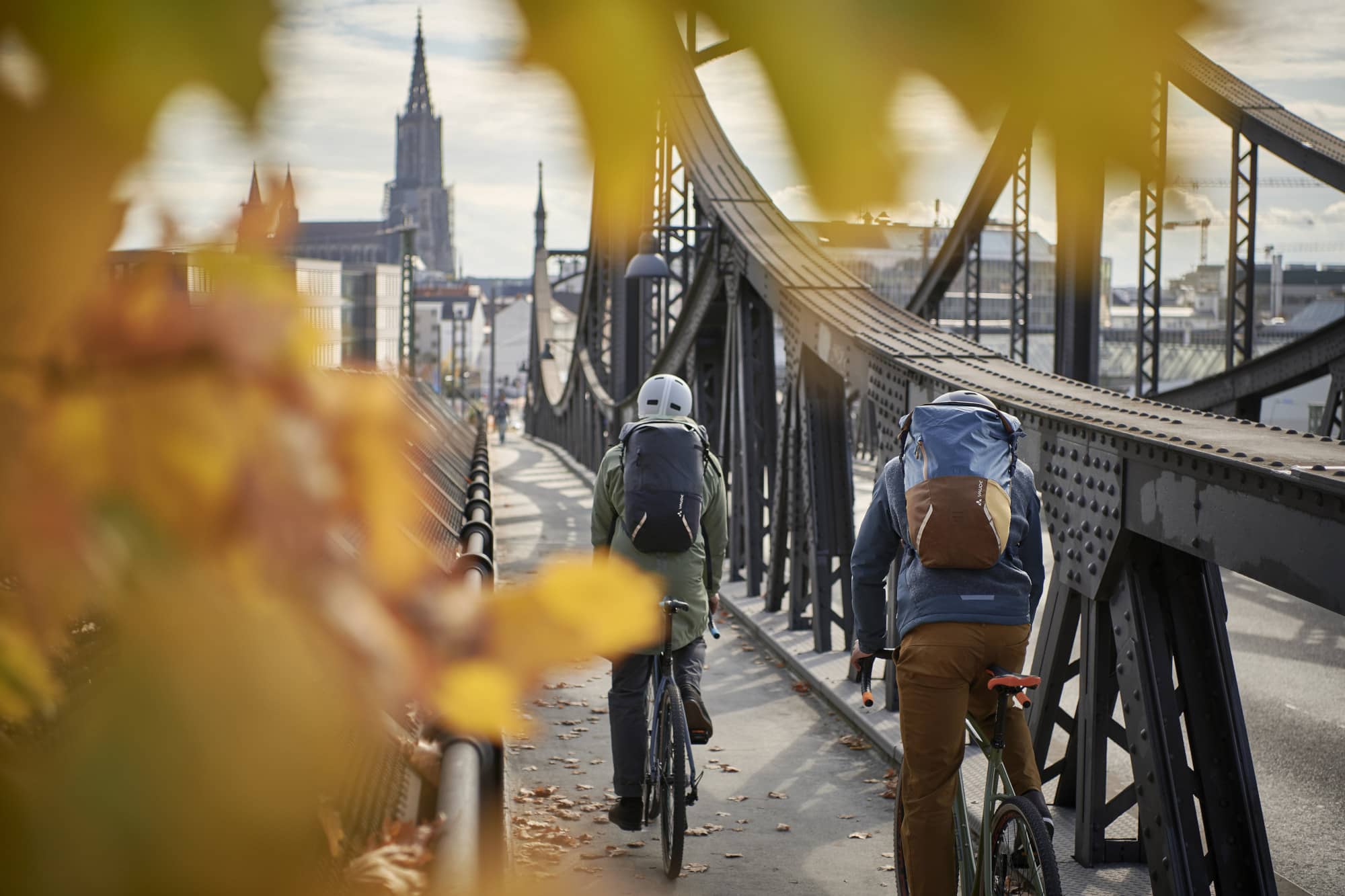Bikester’s Guide To Autumn Cycling

Most of us unequivocally agree that summer is the best time of the year to cycle. But that doesn’t mean it’s the only time of the year to cycle. Far from it – with the right equipment and preparations, you can enjoy cycling in cooler weather just as much. Autumn, while colder and wetter than the summer, can be a fantastic season to ride your bike. We’ve written a few tips to ensure you get the most fun out of fall riding.
No bad weather, only the wrong clothing.
Autumn doesn’t necessarily equal bad weather, and an ‘Indian Summer’ can be a lovely thing. Still, here in Britain, we’re not known for our great weather, and you can almost guarantee that it’ll rain – often! So, get yourself a good rain jacket. Nowadays, you can get a great hard or softshell rain jacket for a modest sum. This is an absolute autumn essential – whether you’re commuting to work by bike, riding in your free time or touring. Look for a model designed for cycling that has a longer back section to cover your bum.
There’s no need to leave your lower body out of the fun. Rain trousers also exist! While these may not be the sexiest item of clothing, if you must ride in the pouring rain, you’ll be glad to own a pair! They slip over your other trousers and can be hung up to drip-dry when you reach your destination.
To complete your rainproof biking outfit, get some waterproof or semi-waterproof shoes (boots are even better), or shoe covers – these are made of the same stuff as waterproof trousers.
Rain protection for your bike
There are also things you can do to protect your bike from the wet. The absolute minimum for wet-weather riding is a set of decent mudguards. If your bike accepts them, go for ones that mount permanently with screws. If not, clip-on mudguards are better than nothing.
Tyres
The right tyres can help you cycle on roads that are wet and covered in debris. If you’re commuting and touring, you’ll want a tyre that has some tread and possibly a Kevlar strip under the rubber to prevent punctures. It’s also worth dropping your tyre pressure a couple of psi for riding in less-than-perfect weather – this can help with grip, although it can slightly increase the risk of a puncture. If you don’t want to change your tyres, make sure your existing ones are crack-free and have plenty of tread. Also, it’s a good idea to fit bigger tyres than the ones you’re currently using – these will offer better traction on damp roads.
Brakes
It probably goes without saying, but make sure your brakes are working properly. This applies throughout the year, but especially in wet weather. If you’re not confident adjusting your brakes yourself, take your bike to a reliable LBS (local bike shop). Brake pads/discs should have plenty of life left in them and your cables should be set so you don’t have to pull the lever right in to decelerate.
Lighting
When the days break later and the nights start drawing in, it’s even more important to equip your bike with proper lights. Ideally, for commuting, touring and heavy use, a dynamo lighting set up is best. This means not worrying about batteries or charging your lights – all you have to do is pedal to turn them on. They’re also harder to steal, so you won’t have to remove them when you lock up your bike. They’ll help you see and be seen, which is essential in darker conditions. If a dynamo lighting setup isn’t possible on your bike, there are many excellent and bright USB-chargeable lights available now that are easy to clip on to the bike and stow in your backpack. We recommend these over ones that use disposable alkaline batteries.
Clothing
Weather in autumn can be quite unpredictable. It can turn from relatively warm to very cold, often in the space of a few days. We’ve already covered rain clothing, but what do wear under your rain jacket or when it’s dry?
Think of yourself as a human onion – use layers and adjust to suit the weather. A base-layer under a mid-layer and sweater or fleece should suffice for most weather. If it’s really cold, think about a thinner down jacket that can fit under a rainproof layer. You can easily remove layers if you get warm and don’t have to deal with the inconvenience of carrying a heavy, bulky coat around when you get too hot.
Bags
Look for waterproof bags. Ideally, we recommend using panniers on your rear rack. These are spacious and generally completely waterproof. You’ll also keep weight off your back and avoid the dreaded Sweaty Back Syndrome (SBS). If you must use a backpack, look for something designed for cycling that offers proper weight distribution and can handle a downpour. A backpack cover is also useful here.
[blockquote text="Why cycle in autumn?Just because the weather isn’t perfect, there’s no reason to relegate your bike to the garage when the summer ends. Cycling through the year is great for your mental health, boosts the immune system and will help you keep the pounds off. You’ll also save considerable money if you commute by bike! With a few simple modifications to your bicycle and wardrobe, you can ensure comfortable year-round cycling. The autumn is also a beautiful time of year – if you cycle regularly you’ll notice the leaves changing from a lush green to a striking gold! " show_quote_icon="yes" border_color="#000000" text_color="#000000" background_color="#dddddd"]
Autumn cycling checklist
[unordered_list style="circle" animate="yes"]- Mudguards
- Lighting
- Rain jacket
- Suitable clothing
- Tyres in good condition
- Chain oiled
- Brakes working properly
[/unordered_list]
